
Rails are a large, cosmopolitan family of small- to medium-sized terrestrial and/or semi-amphibious birds. The family exhibits considerable diversity in its forms, and includes such ubiquitous species as the crakes, coots, and gallinule; other rail species are extremely rare or endangered. Many are associated with wetland habitats, some being semi-aquatic like waterfowl, but many more are wading birds or shorebirds. The ideal rail habitats are marsh areas, including rice paddies, and flooded fields or open forest. They are especially fond of dense vegetation for nesting. The rail family is found in every terrestrial habitat with the exception of dry desert, polar or freezing regions, and alpine areas. Members of Rallidae occur on every continent except Antarctica. Numerous unique island species are known.

Castoridae is a family of rodents that contains the two living species of beavers and their fossil relatives. A formerly diverse group, only a single genus is extant today, Castor. Two other genera of "giant beavers", Castoroides and Trogontherium, became extinct in the Late Pleistocene.

The family Aplodontiidae also known as Aplodontidae, Haplodontiidae or Haploodontini is traditionally classified as the sole extant family of the suborder Protrogomorpha. It may be the sister family of the Sciuridae. There are fossils from the Oligocene until Miocene in Asia, from Oligocene in Europe and from the Oligocene until the present in North America, where there is the only living species: the mountain beaver.

Caviomorpha is the rodent parvorder that unites all New World hystricognaths. It is supported by both fossil and molecular evidence. The Caviomorpha was for a time considered to be a separate order outside the Rodentia, but is now accepted as a genuine part of the rodents. Caviomorphs include the extinct Heptaxodontidae, the extinct Josephoartigasia monesi and extant families of chinchilla rats, hutias, guinea pigs and the capybara, chinchillas and viscachas, tuco-tucos, agoutis, pacas, pacaranas, spiny rats, New World porcupines, coypu and octodonts.
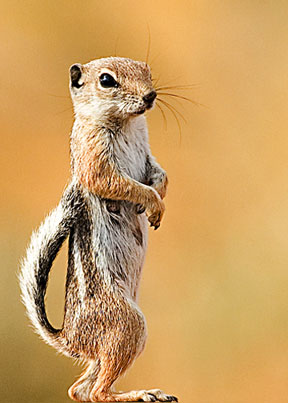
Sciuromorpha ( 'squirrel-like') is a rodent clade that includes several rodent families. It includes all members of the Sciuridae as well as the mountain beaver species.

Thryonomyidae is a family of hystricognath rodents that contains the cane rats (Thryonomys) found throughout sub-Saharan Africa, and a number of fossil genera.
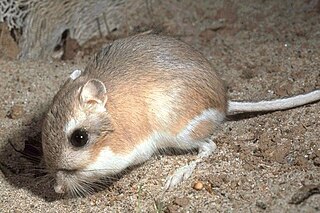
Castorimorpha is the suborder of rodents containing the beavers and the kangaroo rats. A 2017 study using retroposon markers indicated that they are most closely related to the Anomaluromorpha and Myomorpha.

Palaeocastor is an extinct genus of beavers that lived in the North American Badlands during the late Oligocene period to early Miocene. Palaeocastor was much smaller than modern beavers. There are several species including Palaeocastor fossor, Palaeocastor magnus,Palaeocastor wahlerti, and Palaeocastor peninsulatus. The animals first became known on grounds of their fossilized burrows, the "Devil's corkscrews".
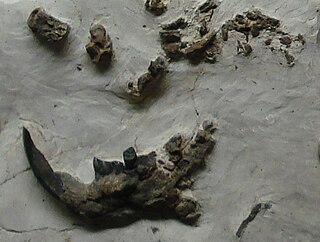
Steneofiber is an extinct genus of beavers from the Miocene. They contain several species of beavers. Amongst them are S.barbouri, S.complexus, S.depereti, S.fossor, S.gradatus, and S.hesperus. Their various species are found all the way from the eastern end of the Iberian peninsula to southern Japan. S.depereti has been found in northwest Germany.
The zygomasseteric system in rodents is the anatomical arrangement of the masseter muscle of the jaw and the zygomatic arch of the skull. The anteroposterior or propalinal (front-to-back) motion of the rodent jaw is enabled by an extension of the zygomatic arch and the division of the masseter into a superficial, lateral and medial muscle. The four main types are described as protrogomorphous, sciuromorphous, hystricomorphous, and myomorphous.

Eomyidae is a family of extinct rodents from North America and Eurasia related to modern day pocket gophers and kangaroo rats. They are known from the Middle Eocene to the Late Miocene in North America and from the Late Eocene to the Pleistocene in Eurasia. Eomyids were generally small, but occasionally large, and tended to be squirrel-like in form and habits. The family includes the earliest known gliding rodent, Eomys quercyi.
Agnotocastor is an extinct member of the beaver family Castoridae. Unlike its modern relative, this species took the place of muskrats in the rivers of North America during the Oligocene epoch. The earliest species is A. galushai, which is also the first reliable member of the Castoridae. It is known chiefly from North America, with a single record from Central Asia.

The Mylagaulidae or mylagaulids are an extinct clade of sciuromorph rodents nested within the family Aplodontiidae. They are known from the Neogene of North America and China. The oldest member is the Late Oligocene Trilaccogaulus montanensis that lived some 29 million years ago (Mya), and the youngest was Ceratogaulus hatcheri—formerly in the invalid genus "Epigaulus" —which was found barely into the Pliocene, some 5 Mya.

Castor californicus is an extinct species of beaver that lived in western North America from the end of the Miocene to the early Pleistocene. Castor californicus was first discovered in Kettleman Hills in California, United States. The species was similar to but larger than the extant North American beaver, C. canadensis.
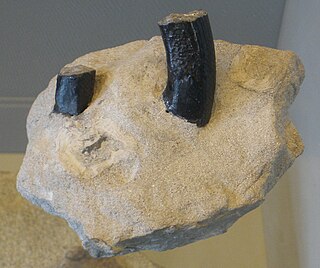
Anchitheriomys is an extinct member of the beaver family, Castoridae. It inhabited North America and Eurasia during the middle Miocene. The name of the genus comes from Anchitherium, an extinct genus of horses, and the Greek word for mouse, μῦς (mys), thus meaning "Anchitherium's mouse", because the fossils of both genera usually co-occur.
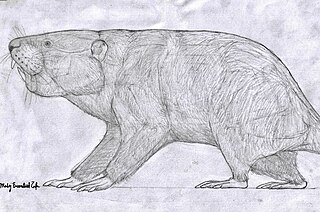
Migmacastor is an extinct member of the beaver family, Castoridae, known from a single species, Migmacastor procumbodens. Only a single specimen has been reported, a skull from the late Oligocene or early Miocene of Nebraska. Features of the incisor teeth of Migmacastor indicate they were used to dig. Other extinct beavers, including the better-known Palaeocastor, were also fossorial (digging), but Migmacastor may have become a burrower independently.
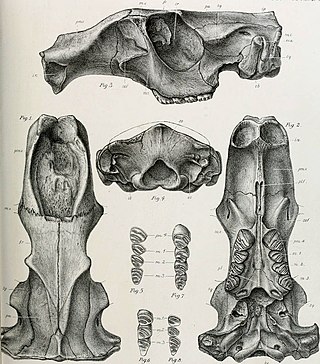
Trogontherium is an extinct genus of Eurasian giant beavers that lived from the Late Pliocene to the Late Pleistocene. Fossils of Trogontherium have been found across northern Eurasia, from Western Europe to China and Siberia.

Apeomyoides savagei is a fossil rodent from the Miocene of the United States, the only species in the genus Apeomyoides. It is known from fragmentary jaws and isolated teeth from a site in the early Barstovian, around 15–16 million years ago, of Nevada. Together with other species from scattered localities in the United States, Japan, and Europe, Apeomyoides is classified in the subfamily Apeomyinae of the extinct rodent family Eomyidae. Apeomyines are a rare but widespread group that may have been adapted to a relatively dry habitat.
Merkurosaurus is an extinct genus of lizards from the Shinisauria that is known from the Late Oligocene of Germany, collected in 1999, and the Early Miocene Most Formation of the Czech Republic and the Wiesbaden Formation Germany of (Amöneburg). A single species, Merkurosaurus ornatus, is known and was named and described by Jozef Klembara in 2008 based on the holotype Pb 02045 and other referred specimens. It was initially only known from deposits in the Czech Republic but remains found in Germany were eventually attributed to the genus in 2015.

Diegoaelurus is an extinct genus of placental mammals from extinct the subfamily Machaeroidinae within extinct family Oxyaenidae. This genus contains only one species Diegoaelurus vanvalkenburghae, which was found in the Santiago Formation in California. This mammal lived during the Uintan stage of the Middle Eocene Epoch around 46.2 to 39.7 million years ago.
















